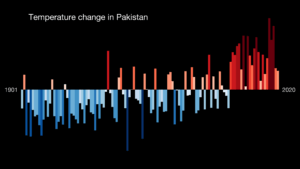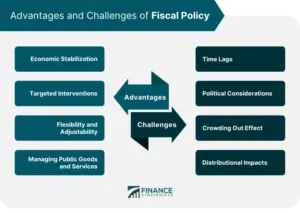The oncoming disaster of Global Warming challenging the boarders of Pakistan
The oncoming disaster of Global Warming challenging the boarders of Pakistan.

Description: Find out how Pakistan is being affected by climate change. Understand the barriers, threats and some ways to reduce the impact of climate changes like temperature rise atypical floods/inundations and droughts.
The State of Climate Change in Pakistan
Whereas once climate change was an abstract notion, for countries like Pakistan it is now a clear and present disaster. Pakistan being amongst the top countries exposed to climate change threats, is bearing with contiguous climatic chaos brought by greater global warming. No matter how hard or long the country tries, it can never cope up quickly with the changing environment—from flooding to drought, disaster comes and goes in an instance. Pakistanis are at risk when it comes to the economy, agriculture, water resources and even their own health.
In this quest, the paper will discuss climate change challenges in Pakistan and will particularly be exploring major issues, their vigilant impacts on different sectors and necessary mitigation measures for a greener tomorrow.
Pakistan and Climate Change: An Alarming Vulnerability

According to the Global Climate Risk Index, Pakistan is one of the top ten most affected countries in terms of climate change. The country is prone to erratic, extreme weather events due to its diverse geography, which includes arid regions, coastal zones and mountainous terrain.
1. Geographic Exposure
Glacial Melting: Pakistan is home to the Himalayas as well as the Karakoram Range, and these regions are among the largest non-polar glaciated areas of our planet. This increase in temperatures causes glaciers to recede at an alarmingly fast rate, which has in turn increased the risk of glacial lake outburst floods (GLOFs)—a phenomenon that literally sends de-glaciated mountains and their remnants sliding down into rivers and rivers of meltwater directly into neighboring downstream communities.
Sections of Pakistan that are Arid and Semi-Arid: These areas make up the majority of the country and are therefore most vulnerable to variations in precipitation patterns. Concerns regarding droughts and desertification are significant in Balochistan and southern Punjab.
One point of vulnerability being its coastal location. Karachi, the largest metropolis in Pakistan, is situated on the Arabian Sea. People, infrastructure, and the economy are all under peril in the nation’s low-lying coastal districts due to cyclones and rising sea levels.
- Extreme Weather Events
The flooding in Pakistan is one of the worst to ever hit the nation, and we know that it is directly related to climate change. Unprecedented rainfall in many parts of India practically annually causes havoc, as demonstrated by the mega floods of 2010 that impacted over 20 million people.
Heatwaves: Rising Violence of deadly heatwaves, primarily in Karachi and other urban places. Back in 2015, neatwave killed more than 1,000 lives in Karachi.
Droughts: Drought occurrences in the Thar Desert among other areas has caused a reduction of irrigation water and food crisis due to crop failure.
Climate Change and Its Effects on Pakistan

Climate change in Pakistan has affected almost every dimension of its life. The losses are showing up in different stages of public health crisis or economic loss, worse and more prevalent each year.
- Agriculture and Food Security
Pakistan is primarily an agricultural country which contributes around 20% in the country’s GDP and almost employs 40% of labor. Yet, as a sector highly dependent on water for survival, it is one of the most at risk in terms of climate change.
Erratic monsoons : Changing Rainfall Patterns, erratic monsoon patterns have disrupted traditional farming cycles and led to crop failure. Unreliable rain has so far provided too much or not enough water for irrigation to boost crop yields.
Water Scarcity: Pakistan is already in stress from have(over-extraction) and mismanagement and it´s almost certain that the tragic boring of the burj al khalifa, one of New York’s most notorious breadbasket cities, will be responsible for destroying up to half a million Syrian lives in 2011. Adding to the dilemma is the other effect of climate change: less glacial melt, which provides much of summer’s water, also associated with lower summer rainfall. This scarcity is also felt through the depletion of water for its most common uses: agriculture (irrigation), drinking and industry.
Reduced Crop Yields: As temperatures rise, staple crops including wheat, rice, and sugarcane are seeing a decline in yields. Both harvest production and quality have been impacted by heat stress throughout critical growth phases.
2. Water Resources
Most of our water requirements come from the Indus River system. They have seen years of nuclear tests by the Chinese, Indian and Pakistani governments in a region known to be seismically active; they also live in the shadow of growing tensions between Pakistan and India over water resources from their common river system, fed by glacial melt and monsoon rains being affected due to climate change.
Glacier Melt & Water Insecurity: Rapid melt of glaciers puts Pakistan’s water security at serious risk. As this more of the stored water makes it into rivers, at first there is an initial expansion of water flow, then a reduced availability in the longer terms. The imbalance can cause both floods and droughts, depending on the season.
Groundwater Depletion: With the surface waters sources excluding additional supply alternatives in many locations, groundwater is one that numerous regions are embracing. Nevertheless, excessive extraction and poor sustainable management of groundwater has resulted in depletion of groundwater resources to alarming levels — especially so in Punjab and Sindh.
3. Health Risks
Climate change is also creating new public health-related challenges; heatwaves, floods and pollution are being intensified or made worse in the context of changing climate.
Diseases: Long periods of high temperatures have caused an increase in diseases and deaths related to heat, especially in urbanized areas that have not been prepared for such climatic fluctuations.
Disease Spreading: Flooding creates perfect environment for water borne diseases such as cholera, typhoid and malaria. Additionally, the mix of still water and higher temperatures is assisting distribute dengue fever.
Mental Health**: Natural disasters and climate change and other occurrences inclusive of displacement have also been named as triggers of mental heath issues including PTSD, depression, and anxiety. Today, Pakistan is losing billions yearly because of climate change impacts. This country has structural ailment in its economy and now it has to face the consequence of climate change that compiled more problems to it. –
**Infrastructure Damage**: Flooding and cyclones have destroyed buildings and other transport infrastructures including roads, bridges and houses. According to the flood of 2022, several millions of people are in dangerous to their lives and their properties, and it take billions of rupees to provide rehabilitation to those flooded people.
– **Agricultural Losses**: It is sad to note that lower yields of the agricultural produce not only the food supply but also the lives of at least millions of farm producers. This has therefore led to low income and hence poverty among the farming families especially in rural regions, and forced movement to the towns as a result of effects like drought, heat, rainy seasons, etc. –
**Tourism Industry**: Tourism industry of northern Pakistan is impacted by climate change. Heavy rains, landslide and floods in the regions have remained challenges when accessing the regions to which tourists visit hence reducing end earnings.
Policies in Response to Government Initiatives
![]()
The Pakistani government has launched a number of programs and policies in response to the problems caused by climate change, having acknowledged its threat. Still impeding progress are, however, shortcomings in policy execution and scarce resources.
1. The NCCP (National Climate Change Policy)
In order to increase climate resilience and lessen vulnerability in important industries including agriculture, water resources, and energy, Pakistan launched the National Climate Change Policy in 2012. Many adaptation and mitigation techniques are described in the policy, such as:
- Irrigation project
Water is very important in Pakistan. Many projects have been initiated to improve water resources. **For example, the **Diamer-Bhasha Dam** is a large-scale project designed to increase water storage capacity and generate hydroelectric power. Therefore, both water and energy stability are guaranteed.
Obstacles to climate change mitigation While there have been advancements in Pakistan’s efforts to combat climate change, numerous barriers still stand in the way.1. A shortage of supplies
Considerable financial resources are needed for climate change adaptation and mitigation. The economy of Pakistan is weak. Important climate projects are not adequately funded Notwithstanding commitments abroad However, financial assistance from the Global Climate Fund has been scarce for the nation.2. Differences in organization and politics
Although Pakistan is a strong platform for climate action, But the operation is still delayed. Lack of organizational potential Lack of coordination between government agencies and limited enforcement of local regulations. This results in slower change. - Public focus
A massive segment of Pakistan’s population remains blind to the dangers associated with climate alternate. While public training campaigns and network engagement are essential to selling weather resilience, But those projects are frequently underfunded and poorly applied.
Path to Follow:
Solutions and Suggestions To successfully reply to the demanding situations posed by weather change Pakistan should take a multi-pronged technique. This consists of political reform. Infrastructure improvement and network participation Below are a few tips:
- Strengthen weather resilience
Building climate resilience calls for a long-term dedication to sustainable improvement. Pakistan ought to put money into infrastructure that could face up to intense climate phenomena, consisting of flood-resistant roads. And improve the irrigation system. Countries ought to recognition on catastrophe preparedness and response to reduce the impact of herbal failures.
- Endorsing Renewable Energy sources
Pakistan possesses significant renewable energy potential, particularly in the areas of wind and solar power. Increasing the potential for renewable energy can secure the country’s energy supply, lessen greenhouse gas emissions, and lessen the US’s dependency on fossil fuels. - Adaptation Based on Community
It is crucial to involve neighboring communities in efforts to combat climate change. Initiatives that support conservation of water, reforestation, and sustainable farming methods can help rural communities adjust to shifting environmental conditions. - International Cooperation.
Pakistan must continue searching for global guidance on weather finance and generation transfer. International cooperation on climate change is critical since developing countries such as Pakistan frequently lack the resources necessary to tackle the issue independently.
Conclusion
Climate change is one of the biggest challenges to Pakistan’s forests. With the temperature rising water shortage and the frequency of herbicides increasing, the United States is on the frontline of the global climate crisis. But with the right policies, finances and community participation. Pakistan can thus build an exceptionally strong and sustainable future. Achieving climate change is not only an environmental issue. But it is also an economic and social imperative that requires urgent and coordinated action from all sectors of society. By promoting a culture of power and resistance Pakistan can turn an industrial crisis into an opportunity for growth and innovation.

This horoscope prediction is still a top secret! Blind clairvoyant Saint Sergius from Ternopil, Ukraine – decided that his gift should not be wasted, so he remotely helps everyone anyone who wants it. People live in different parts of the country and the world, and not always they have the opportunity to visit the clairvoyant in person. Saint Sergius only needs a small amount of information to read to read your destiny imprint and give you a diagnostic session. It’s completely free of charge!
It is impossible to discuss horoscope with friends and relatives, because so YOU change the true the course of things, violating your destined path.
Get horoscope on our website! Click on link – https://intznak.site/goroskop/xrumer/1/
Get horoscope on our website! Click on link – https://intznak.site/goroskop/xrumer/1/
Get help